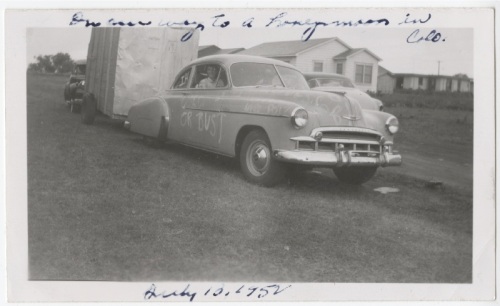by Jason Wolvington, Associate Director, Discovery Science Center
I’m still bitter.
OK, so maybe “bitter” isn’t the right word. Heartbroken? Disappointed? It’s probably more that I’ve always known Pluto as a planet, and so that’s how it always will be in my mind. That’s legit, right?
Actually, no … it’s not.
Back in August 2006, at a meeting of the International Astronomical Union, astronomers made a final decision about the definition of a planet. For an object to be considered a “planet,” it needs to meet these three requirements:
- It must orbit around the Sun.
- It must have enough mass and gravity to pull itself into a nearly-round shape, called hydrostatic equilibrium.
- It needs to have “cleared out” its orbit, meaning it has to have joined with or consumed all smaller objects in its orbit.
From this, Pluto meets only 2 of the 3 requirements – it has not “cleared out” the neighborhood of its orbit. Simply put, Pluto is just one object within the Kuiper Belt, a large collection of celestial bodies similar to an asteroid belt. And wiithin the Kuiper Belt, there are several objects, some of which are even larger than Pluto. So Pluto is not a classified as a planet anymore, just another object in the Kuiper Belt. Make sense?
So what does this mean? In a nutshell, it means that science is doing its job.
Science is a way of seeking to understand our natural world, through observation, experiments, and analysis. Science relies on examining evidence and interpreting its findings through logic; it is tested, repeated, and verified. A scientific theory is a well-substantiated explanation for a set of phenomena that has been tested and verified.
And that’s the key: while scientific theories may be well-supported by evidence, they can be modified or replaced as new evidence appears. Science changes – and it should! – as new discoveries are made.
A perfect example: for thousands of years, people believed the Earth was stationary – and flat! – located at the center of the universe. It wasn’t until scientists such as Copernicus, Galileo, Kepler, and Newton – using a combination of advances in mathematics and developments in telescope optics – developed a new understanding of astronomy and physics that led to new discoveries. You know, things like correctly recognizing that the Earth revolves around the Sun, and that all other planets are ruled by the same physical laws as the Earth.
And that’s what happened to our now non-planet Pluto. As scientific discoveries were made, science adapted … and the Solar System now has 8 planets. It’s not so much that Pluto was demoted, but rather scientific thought refined the classification of what constitutes a planet. And unfortunately, Pluto no longer meets the requirements.
Pluto is now considered a dwarf planet, along with Ceres, Eris, Haumea, and Makemake, all found in the Kuiper Belt. Will it someday regain its planetary status? Perhaps. But with dwarf planet Eris being larger than Pluto, we may have to adjust from the current 8 planets to 10.
And that would just be crazy, right?!
Postscript: It’s only appropriate that we pay homage to Venetia Phair, who, as an astronomy-loving 11-year old in 1930, proposed the name “Pluto” for the newly-discovered “Planet X.” She passed away on April 30th, at the age of 90.
 Our last story from the inaugural Fort Collins Memory Project workshop comes from Lew Arlen Meissner, whose family, like many in this area, were Germans from Russia. Enjoy his story here, and if you missed any of the previous four stories, browse back through the last month and be sure to check them out too.
Our last story from the inaugural Fort Collins Memory Project workshop comes from Lew Arlen Meissner, whose family, like many in this area, were Germans from Russia. Enjoy his story here, and if you missed any of the previous four stories, browse back through the last month and be sure to check them out too.





















You must be logged in to post a comment.